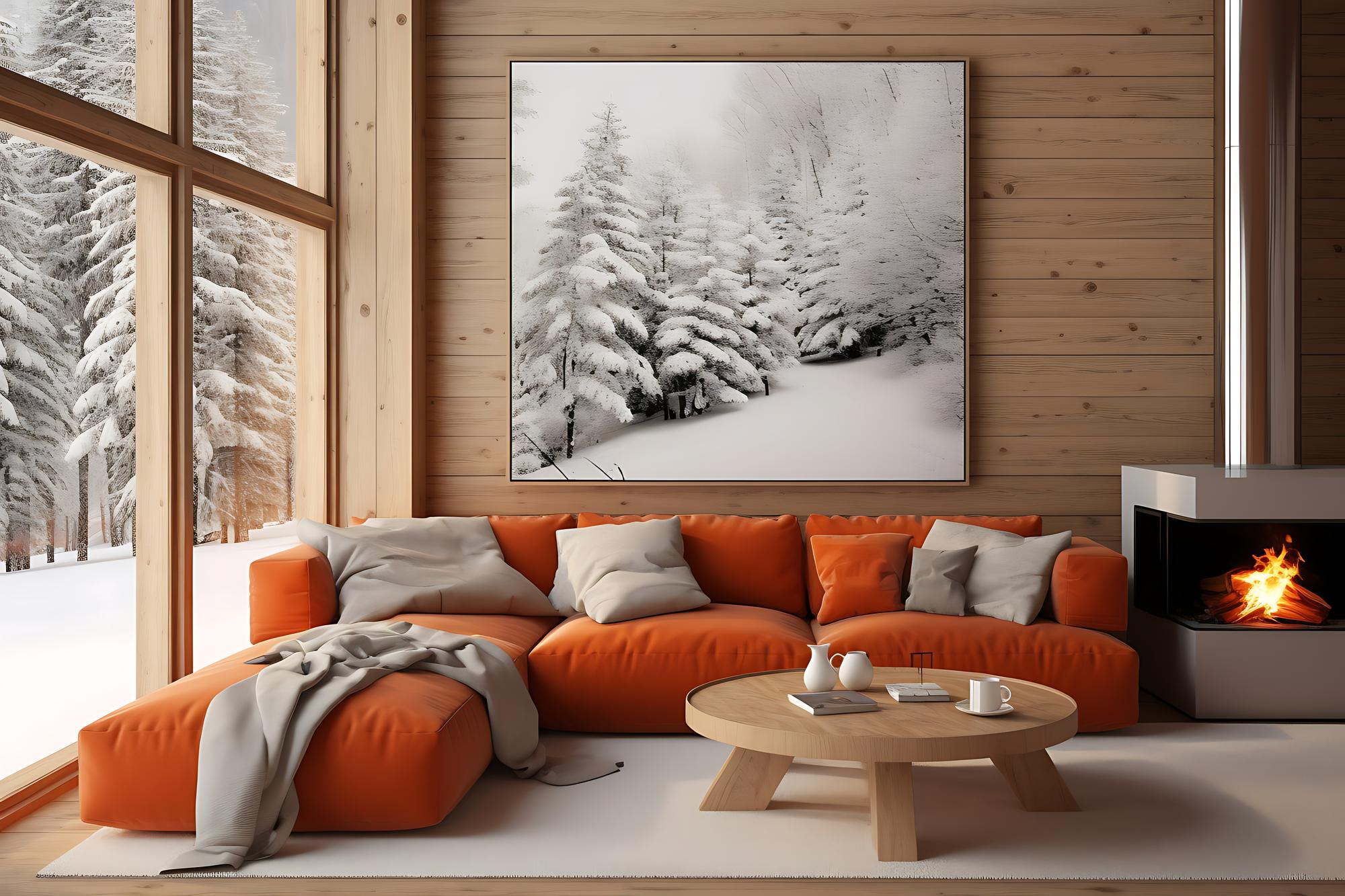As winter sets in, it’s important to take extra care of your wall art to keep it looking its best. The colder months bring challenges like fluctuating humidity, temperature shifts, and increased dust that can all take a toll on your artwork. Whether you have posters, canvas prints, or framed pieces, these winter wall art care tips will help preserve their beauty and integrity throughout the season.
1. Control Humidity Levels for Optimal Preservation
One of the biggest challenges during winter is the dryness caused by indoor heating. Sudden humidity changes can affect materials, leading to issues like warping frames or making paper brittle. To protect your wall art, aim for a consistent indoor humidity level between 40-60%. Using a humidifier can help maintain the ideal range, especially if your home becomes particularly dry during winter.
2. Keep Artwork Away from Heat Sources
Though it’s tempting to position your artwork near a fireplace or radiator for warmth, direct exposure to heat can cause irreparable damage. Prolonged exposure to heat can lead to fading colors and warped frames. To ensure your art lasts longer, place it away from heat sources, keeping it in a cooler and stable environment.
3. Avoid Direct Sunlight, Even in Winter
While winter sunlight may seem softer, it still poses a risk to your wall art. Direct exposure to sunlight, even on cloudy days, can lead to fading and discoloration over time. To prevent damage, choose locations where your artwork won’t be exposed to the sun’s rays, particularly during peak daylight hours. If repositioning is not an option, consider using UV-protective glass for framed art or apply UV-blocking window films to protect your pieces.
4. Dust Your Wall Art Regularly and Gently
Winter often brings more dust, especially with the use of indoor heating. Regular dusting helps keep your artwork clean and free from buildup, but it’s important to be gentle. Use a soft, dry cloth or microfiber duster to carefully clean framed pieces, avoiding harsh chemicals that could damage delicate surfaces. For canvas art, a light dusting should suffice to maintain its appearance without disturbing the paint or ink.
5. Check for Condensation Behind Frames
Condensation can build up on walls during winter, especially if they face the outside or are exposed to temperature changes. This moisture can be harmful to your artwork. Check behind frames periodically for any signs of dampness. Using frames with spacers to keep the artwork slightly away from the glass can reduce the risk of moisture buildup and help protect your pieces.
6. Use an Air Purifier to Reduce Dust
Winter air tends to be drier, and heating systems can stir up dust and other particles in the air. To reduce the buildup on your artwork, consider using an air purifier to keep your indoor air clean. This is particularly beneficial for delicate art pieces like paper prints, fabric, or canvas, ensuring they remain in pristine condition for years to come.
7. Monitor Temperature Changes
Extreme temperature fluctuations can cause significant damage to certain types of artwork. If you’re storing wall art during winter, avoid unheated spaces like attics, basements, or garages, where temperatures can vary drastically. For the best results, store artwork in a room with a stable, moderate temperature to avoid any risks associated with sudden temperature changes.
8. Choose Acid-Free Materials for Framing
When framing your artwork, opt for acid-free materials such as backing, matting, and mounting boards. Acidic materials can cause artwork to yellow and deteriorate over time, especially when exposed to the heat and dry air common in winter months. Acid-free materials help protect your artwork, ensuring it stays in excellent condition and retains its vibrancy for many years.
Final Thoughts: Protect Your Wall Art this Winter
By following these simple yet effective tips, you can ensure your wall art remains well-preserved throughout the winter months. Managing factors like humidity, temperature exposure, and dust will help your artwork maintain its original beauty and value for years to come. A little extra care now will ensure that your cherished pieces stay vibrant and protected, season after season.

